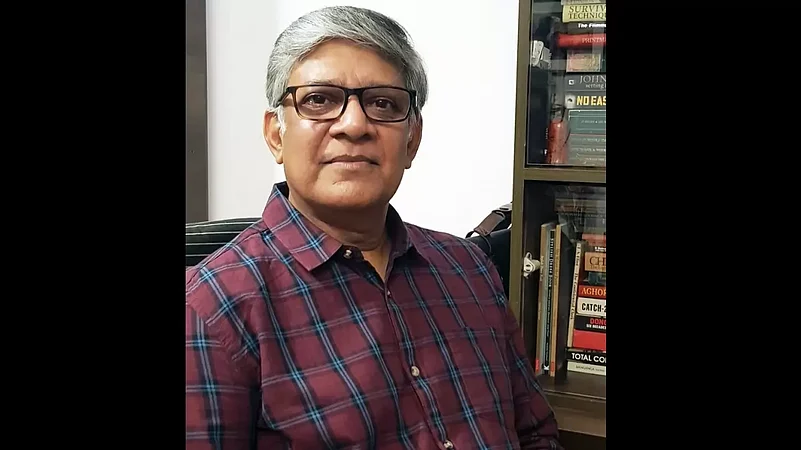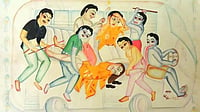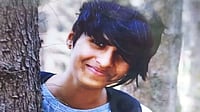Author Anirudhya Mitra was 32-years-old in May 1991, and a one-month-old employee at India Today when Prime Minister Rajiv Gandhi was assassinated. The news magazine, and especially Mitra, became the cynosure of all eyes, for a series of breaking news and exclusive reportage on the crime, much to the ire of rival media houses.
Three decades seems like an eternity, but not for Mitra, who released his book on the case titled 90 Days: The True Story of the Hunt For Rajiv Gandhi’s Assassins. Three decades, however, seem like an eternity for the seven convicts who were released this month after the Supreme Court commuted their death sentences, and their life sentences were absolved.
After the Union government, now the Congress is planning to seek a review of the premature release of the convicts linked to the Sri Lankan militant organisation Liberation Tigers of Tamil Eelam (LTTE), led by Prabhakaran, which was blamed for plotting and executing the assassination of the former prime minister. While the Congress and the Gandhi’s diametrically opposite views are quite the head spinners, Mitra’s book is being made into a web series, and the ex-scribe is on the verge of completing a second book.
In this freewheeling interview with Outlook, Mitra recollects the collective disappointment felt by him and the investigating officers about the various loose ends, including the unresolved mystery of the larger conspiracy behind the assassination.
The first paragraph of the preface itself describes how for 30 years you have waded through friends, seniors, even government officials asking you the same question, why haven’t you published a book on “one of the biggest crimes in modern history” that you extensively covered. You finally did it this year.
Over these three decades, I kept toying with the idea but didn’t feel confident to write the book. Besides, many books on Rajiv Gandhi’s assassination were already written, even by those involved in the probe, like Head of SIT D R Kaarthikeyan, Chief Investigation Officer K Ragothaman, and other journalists like Neena Gopal who covered the case.
Then, my ex-boss in UTV went through my articles and collected research, and said I was just sitting on great film material. I finally wrote the book within 5-6 months in 2020. The book has got good reviews, and even became a bestseller for two days! (laughs)
The case still haunts those who investigated it. I don’t think anyone was satisfied with the MC Jain Commission that was looking into the larger conspiracies behind the assassination. It being an ‘unfinished task’ further propelled me to go down memory lane, see what came out of it.
Your disappointment is palpable in the book’s last paragraph, where “an end like that was a setback”, “bit of an anti-climax”. Were there other points in the operation you felt frustrated?
What frustrated me also frustrated the CBI’s special investigation team (SIT) officers, who were investigating Sivarasan’s various connections and his alleged fundraising activities overseas. This plot was not by just this small group of assassins. This level of plotting was not possible without a support base, and LTTE had turned Tamil Nadu into that base, along with political sympathy. For instance, Murugan Sriharan, one of the LTTE assassins and an explosives’ expert, had sourced a particular variety of RDX that only the Indian armed forces had. The question is, who helped Murugan?
It was very frustrating when the SIT head, Kaarthikeyan, ignored these crucial angles. Perhaps, he was too focused on gaining tangible success. In a way he was successful, by following the government’s mandate—crack the case, arrest as many perpetrators possible, produce them in court, fight the case and secure a conviction no less than a death sentence. The larger conspiracy had a lot of smoke screens. Like, Amit Verma was personally investigating the CIA-Mossad-LTTE link, but failed to draw a logical conclusion.
Kaarthikeyan had a huge SIT team, and could have used it to dig further after the courts had decided on the matter. But everything was left to the Jain Commission. Even at JC, there were delays. After he was chosen to head JC, Justice Milap Chand Jain had to wait for a year to get an office and a proper team to assist him.
As for me, of course, I got lot of support from the Tamil Nadu Police, politicians, friends and sources from intelligence agencies, but the people sitting in New Delhi were tight lipped, and slowly the crack team investigating the case also chose to stay tight-lipped.
What do you make of the Congress being set to file a review petition in the Supreme Court against the release of Rajiv Gandhi’s assassination convicts?
Firstly, I fail to understand what compelled the SC to pass this order. The convicts were serving life sentences, which meant imprisonment for life. But then, it was stated the convicts were ‘languishing’ in jail as there was massive delay in deciding their mercy pleas. To me, these statements are self-conflicting.
What really confuses me is the Congress Party’s stand. Since the first night after the assassination, all fingers pointed at LTTE. The assassination had happened in Tamil Nadu. They could easily escape to their homeland, hours away. Plus the Sriperumbudur blast appeared similar to previous LTTE suicide bombings. DMK and its allied parties’ sympathy for the LTTE is an open secret. DMK had said it condemns the assassination, but DMK government, and Chief Minister MK Stalin, warmly greeted A G Perarivalan, Rajiv Gandhi’s first convict to be released in May, and even posed for photographs. Congress was aware of DMK’s attitude towards LTTE. Yet, the party formed the government with DMK not once, but twice despite the indictment against DMK in the JC report.
Then in 2008, Priyanka Gandhi Vadra meets her father’s convict Nalini Sriharan in Vellore Central Prison, and forgives her, and later her brother also follows her suit. Now, Congress wants to challenge the release of Rajiv Gandhi’s convicts. To share power with the DMK, the Congress is staying quiet, but in its individual capacity it will register its protest? I am not sure what exactly the Congress wants. Does this mean the three Gandhis can be isolated from the Congress party’s views? Even a child will not believe that.
On the one hand your breaking story, Rajiv Gandhi Assassination: The Inside Story brought you under scrutiny from rival reporters and even your editor, but increased your sources.
India Today received a lot of criticism for ‘sensationalising’ the case, and that my piece gave the impression that I wrote it sitting in Jaffna. Even celebrated journalist N Ram, in his column, called my coverage ‘yellow journalism’. My editor, Arun Poorie, was very upset and called me for an explanation. I said perhaps N Ram’s reporters could not crack the case the way I did as a one-man army all the way from Delhi. ‘Are you saying Mr Ram is jealous of you?’ he asked. ‘At least, he’s jealous of my story’, I replied. Arun further made Shekhar Gupta crosscheck the legitimacy of my stories with his sources, who said my facts were accurate.
Many reporters began to corner Kaarthikeyan, accusing him of being biased to one media house, and giving me exclusive content. Instead, he told them that I had produced these facts as a figment my imagination. Soon the three suspects I had named in my story got arrested. When reporters again confronted him about the arrests, this time he just replied, ‘no comments’. These instances made me confident about my work.
After my breaking story, the Tamil Nadu police, forensic department, and other agencies become more cooperative, answered all my queries. The other agencies felt why should SIT get the limelight, when we are doing equally good work? This again led me to get lot more information than rival news reporters. Of course, it was growth for me. I was no longer dependent on what my friends-cum-sources from the CBI, SIT, fed me.
As recorded in the book, your initial articles, especially the one where you try to prove it was Rajiv Gandhi’s destiny to die in Sriperumbudur, didn’t make an impression on your editors till you hit gold with. Does the book then, also chronicle your growth as a reporter?
It did. I was daily news reporter before I joined India Today, a news magazine where the editors wanted every article to have an exclusive angle. That was my first learning. I had to get access nobody had. I took a while to understand that was a 7-10 days gap between the time I filed the stories I found exciting and to them appearing in print as the magazine was a fortnightly back then. I learnt to figure out from sources what could happen 7-10 days down the line, so my stories were still ripe when the issue was published.
What went into writing the book?
Throughout the book I have only stuck to reporting. Not a single section is opinionated. Instead, I let the characters emote. I love to write thrillers and resorted to the usual tropes of putting cliffhangers on every page, to make it a page-turner. I researched for the story once again, especially going through court documents to see how the courts responded to the various charge sheets, what the judges said, and the detailed information the judgments offered.
I called couple of my friends who were part of the investigation. Unfortunately, some of them are no more. SIT officials Radhavinod Raju, DIG, passed away and so did Amit Verma, SP, in 2010. He was a close friend, and the book starts off with me recollecting the previous night we were playing badminton, when he got an urgent call that started the chain of events pertaining to the assasination.
Why did you write the book in third person?
I am not a celebrity, and I was wary of looking like I wrote the book to achieve glory and the publicity. But whole of the first month I had a writer’s block, deciding whether I should write the book in first person or third person. Finally, I wrote a portion of it in third person and showed it to my wife, who approved of it.
What made you switch to writing fiction for TV and films?
I always wanted to write fiction, and journalism was an exciting detour, a huge learning curve. After a while, the constant churning of stories got to me. A few of my stories were killed, including an investigative piece on corruption charges against a Union minister. I was told that sarkar gir jayegi (the government will fall) if that piece was published. That was a turning point. I wanted to try television, and got the chance to be an executive producer for The Pritish Nandy Show on Doorshadan. I moved from Delhi to Mumbai after got an opportunity with UTV here.
How did writing this book affect your life?
Personally, I find this journey satisfying. I sold my rights of the book to content studio Applause Entertainment that is producing a web series on the book, titled Trail of an Assassin and directed by filmmaker Nagesh Kukunoor. I have already written four episodes. Nagesh who writes his own shows is also writing, and Applause will take a call how to take it forward.
In fact, I am almost done writing my second book. All I can say it that it's based on true events. It’s a story that I actually could never get published, and no book has been published on this subject. I am writing like a fiction novel as there are couple of things I won’t be able to substantiate/approve, and the book could run into a lot of problems. But whoever reads the book will know the characters I am referencing to in real life.

























